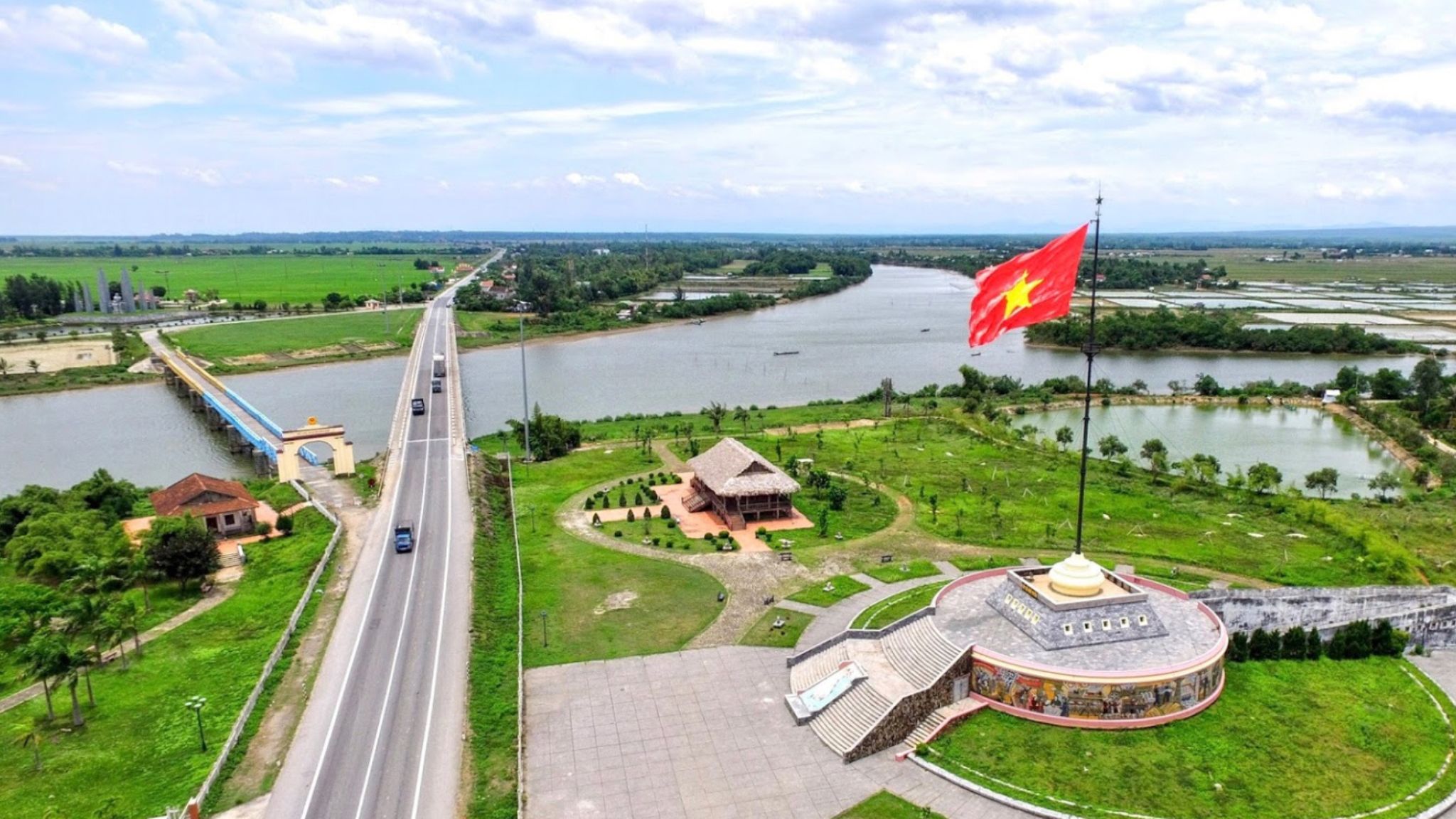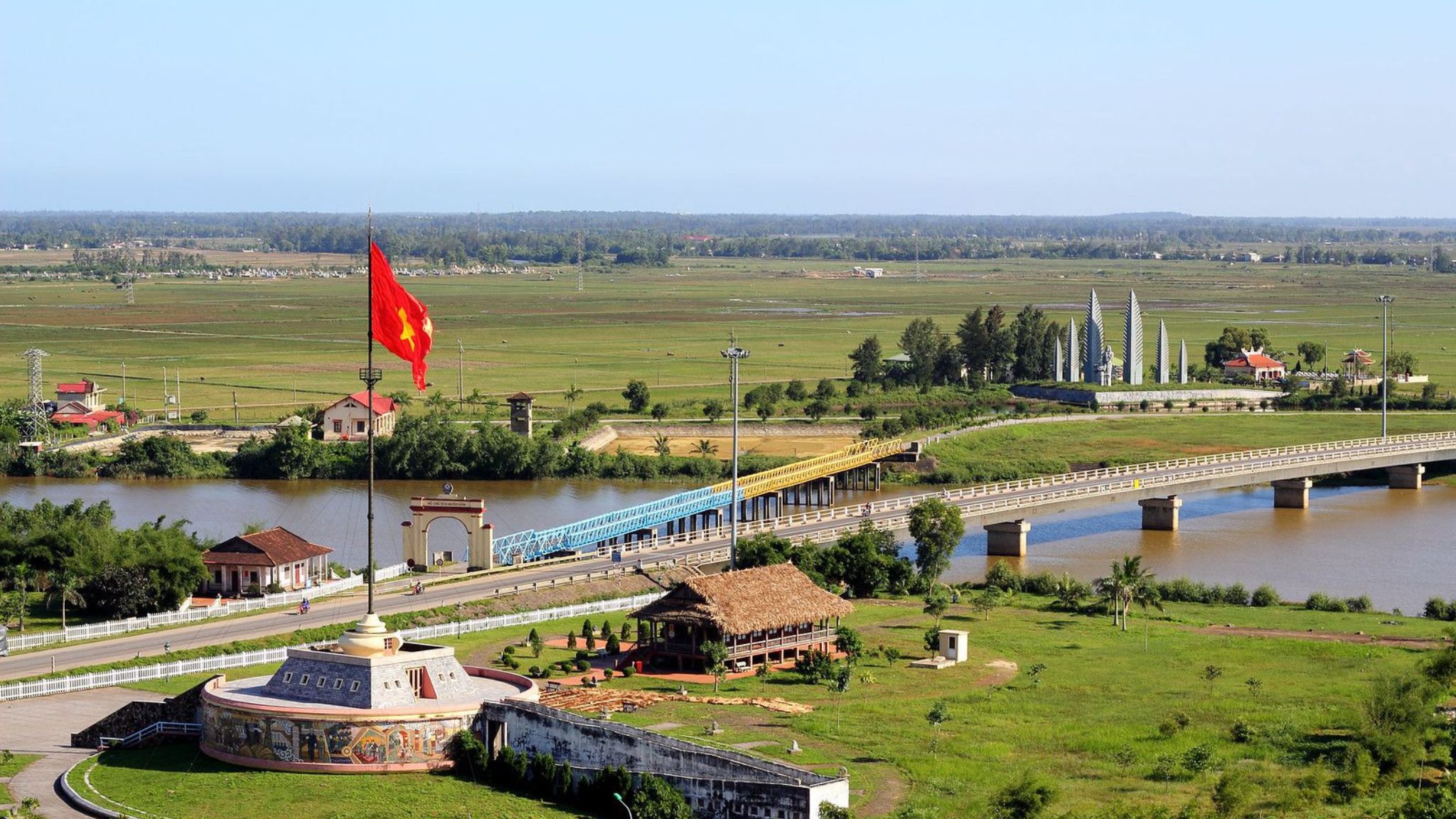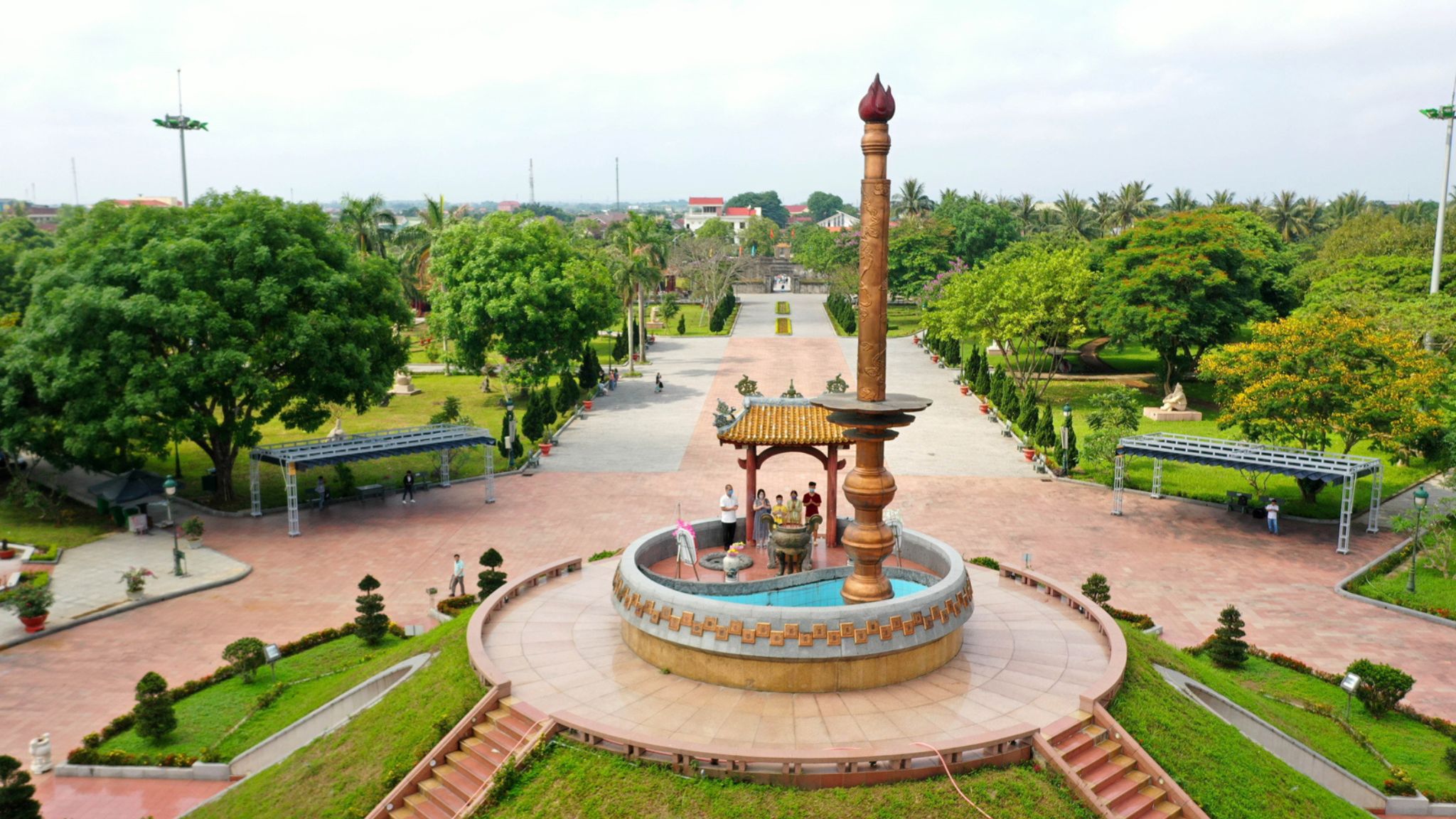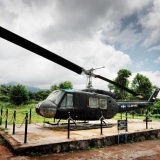DMZ - From War Zone to Peaceful Sanctuary
DMZ (Demilitarized Zone) in Quang Tri refers to the area that once served as a buffer zone between North and South Vietnam during the Vietnam War.
Located along the 17th parallel, the DMZ serves as a living testament to the wartime experiences and the struggle for reunification.
Overview About DMZ
- Address: Quang Tri Province, Vietnam
- Opening hours: Daily from 07:00 to 17:00.
DMZ is the abbreviation for the Demilitarized Zone, also known as the temporary military border zone.
After war damages, this is still one of the poorest areas in the country due to bad weather and lands littered with deadly unexploded ordnance and poisoned by chemicals.

DMZ
The Quang Tri DMZ system serves as a history book, telling stories of resilience, sacrifice and solidarity. Visiting these locations offers a deep understanding of Vietnam's journey through difficult times and the discovery of its rich cultural heritage.
Moreover, this place is surrounded by stunning natural landscapes. Visitors can explore the picturesque countryside while reflecting on the historical events in this once-turbulent region.
What To See At DMZ
A visit to the DMZ Vietnam provides an exciting exploration, that includes architectural wonders, rich history, and captivating landscapes that witnessed a significant chapter in Vietnam's past.
Khe Sanh Combat Base Area
- Ticket price: around US $0.8.
Khe Sanh, one of the places in history, is associated with outstanding events during the years of resistance to protect the country of Vietnamese people.
Khe Sanh once became one of the most famous places in the world because of many major battles that occurred in this area in 1967 and 1968.

Learn About The Intense History Of Vietnam
The Khe Sanh Exhibition Center museum displays a rich collection of exhibits, images, and documents, providing visitors with profound insights into the challenges faced by both the military and civilians during the conflict.
Vinh Moc Tunnels
- Ticket price:
Adults | Around US $1.6 |
Children (over 1.3m tall) | Around US $0.8 |
Children (under 1.3m tall) | Free |
The Vinh Moc Tunnels are an underground complex used by North Vietnamese villagers as a shelter during the bombing raids. This is not just a simple fighting bunker like other works, but also an underground living space for soldiers and local people.
They turned the underground into sturdy fortresses with three interconnected floors. With those great historical values, in 2014, the Vinh Moc Tunnels was recognized as a special national monument.

Experience Underground Living Space During Vietnam War
Visitors can explore the tunnels, gaining firsthand experience of the living conditions and resilience of the local population amidst the challenges of war.
Hien Luong Bridge - Ben Hai River
- Ticket price:
Adults | Around US $1.6 |
Children (over 1.3m tall) | Around US $0.8 |
Children (under 1.3m tall) | Free |
Hien Luong - Ben Hai is a place that witnessed the pain of separation between the two regions and the historical events associated with the process of the national liberation struggle.

Hien Luong Ben Hai - The Symbol Of Unity And Division
The Hien Luong relic site still preserves images, memorabilia, and historical relics associated with a time when the country was divided such as the Hien Luong Bridge and the flagpole on the North bank, Union House, a cluster of monuments "desire for unity".
Quang Tri Ancient Citadel
- Ticket price: Free.
Dating back to the 17th century, the Quang Tri Ancient Citadel in central Vietnam is a resilient fortress with a significant wartime history.
Despite the impact of conflict, the citadel is a testament to Vietnam's enduring spirit, with historical remnants that narrate its storied past.

Explore The Centuries-Old Quang Tri Citadel
The Quang Tri Ancient Citadel showcases a blend of cultural, architectural, and military elements. Visitors can witness remnants of the citadel's walls and gates, gaining a profound understanding of its strategic importance throughout various periods.
How To Get There
Private Car Rental
- Price: From US $35 to $57.
The journey time from major cities like Hue or Da Nang by car could be around 2-3 hours. You can rent a car and private driver through local travel agencies or online platforms.

Enjoy The Comfortable Journey On Private Car
Hiring a private car can flexibility in scheduling and routing. A more personalized and comfortable travel experience. However, it may potentially higher cost compared to other modes of transportation. Requires a valid driving license if you plan to drive yourself.
Before renting a car, remember to confirm the fee, payment method, and any deposit requirements to avoid misunderstandings.
Motorbike Rental
- Price: From US $4 to $8 per day.
The travel time may last 4 hours and vary based on your starting point in Hue or Da Nang. Motorbike rentals are available through local shops or guesthouses. Ensure that the rental includes a helmet and necessary documentation.
Renting a motorbike in Quang Tri offers unparalleled flexibility, allowing you to explore the city and its surroundings at your own pace. Also, opting for a motorbike is often more budget-friendly than other transportation options, but it may not be suitable for those unfamiliar with local traffic conditions.
By Taxi
- Price: From US $0.3 to $7 per kilometer.
The drive typically takes 2 to 3 hours to get to DMZ from Hue or Da Nang. Taxis are readily available for flagging down on the street, or you have the option to utilize ride-hailing applications.
Taxis commonly use meters, ensuring transparent pricing without the necessity for haggling. It also provides sufficient space for your luggage and belongings. However, traveling by taxi may limit opportunities for interaction with fellow travelers.
Local Tips When Exploring DMZ
- Beware Of Scams
Be cautious of individuals offering unreliable tours or services in the DMZ Quang Tri area. To ensure a trustworthy experience, always contact reputable travel companies such as BestPrice Travel.
- Cultural Respect
When visiting historical and religious sites such as temples of ancient citadels, it's advisable to dress modestly out of respect for the local culture and traditions. Avoid clothing that is too revealing or offensive to local customs.
- Packing Essentials
When exploring the historical sites of DMZ Quang Tri, ensure comfort by wearing appropriate clothing and sturdy shoes. Shield yourself from the Vietnamese sun by packing sunscreen, a hat, and a water bottle to stay hydrated throughout your journey.
- Security
Keep a close eye on your belongings, especially in crowded areas, and opt for a secure backpack to deter pickpockets. These precautions contribute to a worry-free exploration of the historical sites in the region.
Trip that visit DMZ



